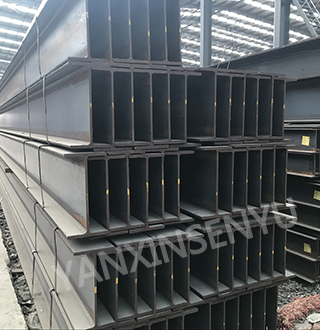In the application of hot-rolled H-beam, the problem of steel itself is often presented, for example, its appearance will show the condition of peeling and pitting. This situation has seriously affected the construction of the project. Therefore, in order to reduce the appearance of this situation and improve the quality of hot-rolled H-beams, we need to understand the reasons for this situation.
If the surface of the hot-rolled H-section steel is a contig that has no obvious cracks, it is because the scale of the scale is not cleaned after the slab is heated and before the rolling. The presence of pitting on the surface is due to the large number of bubbles and scales on the surface of the slab. Therefore, we must be strict in the rolling process, and carefully implement the phosphorus removal process, then the appearance of pitting will be reduced. After seeing the metallographic structure, the organization of the depression is not worse than the general organization, and there is no decarburization. Next, let's take a look at the metallographic analysis of the tongue and scaly skin.
Hot rolled H-beams are mainly ferrite and pearlite. The surface peeling is mainly caused by the surface screed of the slab. It can also be seen from the metallographic observation that the crack is not extended by the surface and is present inside the near surface of the section steel. The internal impurities are steel slag.
The problem of the slab is mainly manifested in defects such as subcutaneous bubbles, surface pinholes and slight scarring on the near surface.
As can be seen from the above, the cause of the surface problem of the hot-rolled H-shaped steel is the defect of the casting blank, and the second is the heating and descaling effect of the casting blank, so that the surface iron oxide scale is pressed in. Therefore, in order to solve the problem, we can start from the two processes of smelting and rolling.
In the smelting process, it is necessary to look at the moisture, manage the degree of baking of the raw materials, maintain the balance between dry and wet, and prevent surface pinholes and subcutaneous bubbles in the slab. In the rolling process, in order to better remove phosphorus, it is necessary to adjust to the appropriate water pressure, and adjust the temperature range to the upper limit during operation. After doing this, the smelting supply and demand and rolling process are more stable, and the surface quality and internal quality of the slab have been greatly changed, and it is more smooth and good.














